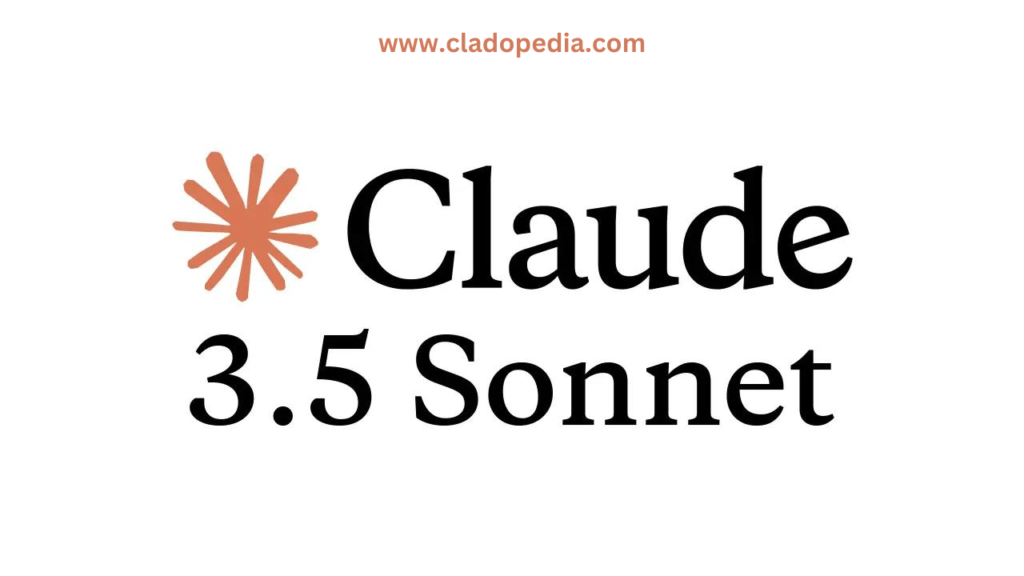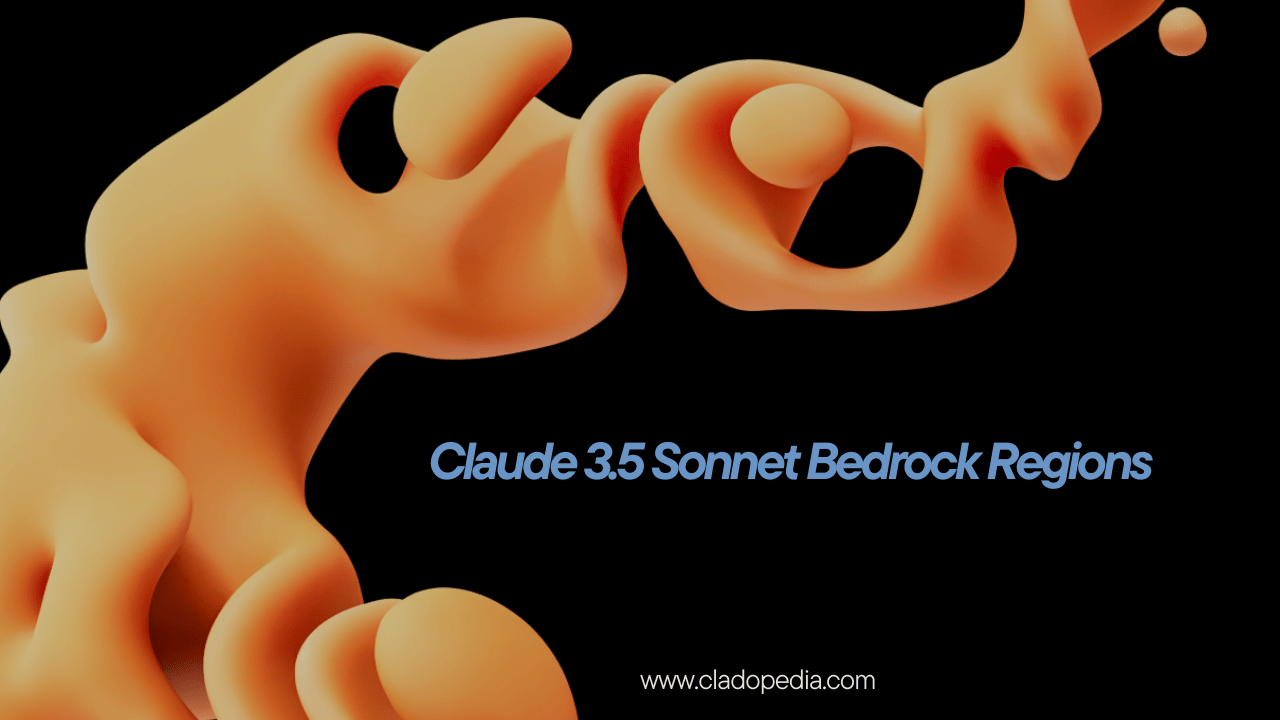Claude 3.5 Sonnet Bedrock Regions . Claude 3.5 Sonnet, a cutting-edge natural language processing (NLP) model developed by Anthropic, offers state-of-the-art conversational abilities and language understanding. For cloud-based models like Claude 3.5, Bedrock Regions refer to the geographic locations of cloud servers where the model is deployed, trained, and accessed. These regions are crucial for optimizing performance, ensuring data privacy, compliance with local laws, and minimizing latency for users.
In this article, we will explore the significance of Bedrock Regions for Claude 3.5 Sonnet, the architecture behind it, how regional deployments affect performance, privacy, security, and compliance. We will also delve into best practices for using Claude 3.5 across different regions and how organizations can choose the most appropriate deployment for their needs.
Cloud-based AI models like Claude 3.5 Sonnet rely on distributed cloud infrastructure to deliver fast, reliable, and secure services to users globally. A fundamental aspect of cloud infrastructure is the concept of Bedrock Regions, which are geographic clusters of cloud servers managed by cloud providers. These regions serve as the “bedrock” for hosting, training, and deploying AI models, ensuring that users in different locations can access the services with minimal latency and maximum efficiency.
In this article, we will explore how Bedrock Regions play a pivotal role in optimizing the performance, security, and regulatory compliance of Claude 3.5 Sonnet. We will also look at how organizations and developers can leverage these regions to enhance their user experiences.
Understanding Bedrock Regions
What are Bedrock Regions?
In cloud computing, Bedrock Regions refer to geographically distinct areas where cloud infrastructure is hosted. These regions consist of multiple data centers that work together to provide services such as storage, computing, and networking. Each region is designed to operate independently, which enhances reliability and resilience. For example, major cloud providers like AWS, Azure, and Google Cloud offer numerous Bedrock Regions worldwide, allowing services like Claude 3.5 Sonnet to be distributed across multiple locations.
Role of Bedrock Regions in Claude 3.5 Sonnet
For the Claude 3.5 Sonnet model, Bedrock Regions are essential to ensure that the model can be deployed across different geographies, improving its accessibility, performance, and compliance with local laws. The role of these regions includes:
- Reducing latency by hosting the model closer to the users.
- Meeting data residency requirements, ensuring that data stays within specific geographic boundaries.
- Optimizing resource allocation, as cloud infrastructure in different regions can be scaled according to demand.
By deploying Claude 3.5 in strategically selected Bedrock Regions, organizations can provide seamless services to global users without compromising on speed, security, or compliance.
Regional Deployment Architecture for Claude 3.5
Distributed Architecture
Claude 3.5 Sonnet operates on a distributed architecture, meaning that its core components (model servers, data storage, etc.) are spread across multiple Bedrock Regions. This architecture enhances the robustness of the model by ensuring that services can continue to function even if one region experiences an outage or network issue.
Key components of this architecture include:
- Global Load Balancing: Traffic is distributed across regions based on user proximity, ensuring that users are routed to the nearest available server.
- Redundant Storage: Data is stored in multiple regions to safeguard against data loss and improve access speed.
- Edge Computing: Some computations can be performed at the edge (closer to the user), further reducing latency.
Load Balancing and Latency Considerations
To optimize performance, Claude 3.5 Sonnet uses sophisticated load balancing algorithms to route requests to the nearest Bedrock Region. This minimizes latency, especially for applications requiring real-time responses, such as conversational AI or live customer support. By strategically deploying Claude 3.5 across multiple regions, the load on any single region is reduced, ensuring smoother performance and faster response times.
How Claude 3.5 Sonnet Utilizes Bedrock Regions
Data Localization
Data localization is a key benefit of deploying Claude 3.5 Sonnet in Bedrock Regions. Certain countries and regions have strict regulations that require user data to be stored within their borders. For instance, the European Union’s General Data Protection Regulation (GDPR) mandates that data must be stored within the EU for privacy protection.
By utilizing Bedrock Regions, Claude 3.5 ensures that:
- User data stays within the region where it was collected.
- Compliance with data protection laws like GDPR, CCPA (California Consumer Privacy Act), and others is maintained.
Latency Reduction and Performance Optimization
One of the primary benefits of Bedrock Regions is latency reduction. When users interact with Claude 3.5, the time it takes for their queries to be processed and responded to can be minimized by deploying the model in regions closest to the users. For instance:
- Users in Europe will interact with Claude 3.5 hosted in European data centers, ensuring fast response times.
- Users in Asia may connect to Bedrock Regions in Tokyo or Singapore to enjoy similar benefits.
This performance optimization is critical for applications requiring real-time interaction, such as customer support, chatbots, or language translation services.
Security and Compliance in Bedrock Regions
Data Sovereignty and Local Regulations
Data sovereignty refers to the concept that data is subject to the laws and governance structures within the nation where it is collected and stored. Claude 3.5 Sonnet’s deployment in Bedrock Regions ensures adherence to local regulations:
- GDPR in the EU: Requires strict data handling, ensuring personal data is kept within European boundaries.
- Local Regulations in China: China has stringent data localization laws, requiring foreign companies to store user data on servers within the country.
By deploying Claude 3.5 in compliance with local laws, organizations avoid legal complications and build trust with users concerned about data privacy.
Encryption and Security Protocols
Security is paramount for cloud-based AI models. Claude 3.5 utilizes end-to-end encryption and other security measures within Bedrock Regions to safeguard user data. Some of the key security features include:
- Data Encryption at Rest and In Transit: Ensures that data stored in Bedrock Regions and while being transferred between regions remains secure.
- Access Control and Authentication: Strict access control measures, including multi-factor authentication (MFA), ensure only authorized personnel can access sensitive data.
Benefits of Regional Deployments for Claude 3.5 Users
Lower Latency
By deploying Claude 3.5 in multiple Bedrock Regions, users experience reduced latency, leading to faster and more efficient processing of their requests. This is particularly useful for real-time applications like customer support or voice assistants.
Improved Data Privacy and Security
Regional deployments ensure that data is handled according to local privacy laws, offering users peace of mind. Organizations can ensure that their use of Claude 3.5 aligns with data sovereignty regulations.
Scalability and Resource Availability
Cloud infrastructure in different Bedrock Regions allows Claude 3.5 to scale dynamically. If there’s a sudden increase in demand from a specific region, additional resources can be allocated to maintain optimal performance.
Best Practices for Leveraging Bedrock Regions in Claude 3.5 Sonnet
Identifying Key Regions Based on Use Cases
Organizations should carefully select Bedrock Regions based on the geographic locations of their user base and the data residency requirements of the industry they operate in. For example:
- Healthcare providers in Europe should choose a Bedrock Region within the EU for GDPR compliance.
- Global tech companies might need deployments in North America, Europe, and Asia to serve users efficiently.
Data Residency Planning
It’s essential to plan for data residency in advance, especially for sectors like finance, healthcare, and government services, where data protection laws are stringent. Organizations should ensure their Claude 3.5 deployment is aligned with local data regulations.
Monitoring and Performance Tuning
Regular monitoring of latency, load, and performance metrics is necessary to ensure optimal user experiences. Performance tuning, based on regional demand, ensures that the Claude 3.5 infrastructure scales effectively.
Challenges in Managing Claude 3.5 Sonnet Across Bedrock Regions
Managing Data Replication and Synchronization
Synchronizing data across multiple Bedrock Regions can be challenging. Maintaining consistency and ensuring data replication without significant delays requires robust data management practices and cloud
-native tools.
Compliance Complexity Across Multiple Jurisdictions
Operating across multiple regions means complying with local regulations, which can vary significantly. Organizations need to stay informed about laws in each Bedrock Region to avoid penalties and ensure compliance.
Handling Infrastructure Costs
While deploying Claude 3.5 in multiple regions enhances performance, it also comes with additional infrastructure costs. Organizations need to balance performance requirements with budget considerations.

Future Trends in Bedrock Region Deployment for NLP Models
Expansion of Regional Availability
As demand for AI-powered services grows, cloud providers are expanding their Bedrock Region offerings, ensuring that models like Claude 3.5 Sonnet can be deployed in even more geographic areas, reducing latency for a broader range of users.
Enhancements in AI-Specific Cloud Infrastructure
Cloud providers are also enhancing their AI-specific infrastructure, offering better support for large language models (LLMs) like Claude 3.5. This includes faster GPUs, specialized hardware like TPUs, and improved networking capabilities.
Conclusion
Bedrock Regions are integral to the success of Claude 3.5 Sonnet, providing a robust infrastructure for deploying the model across the globe. These regions help reduce latency, ensure compliance with local regulations, and improve the overall performance and security of the model. By understanding the role of Bedrock Regions and implementing best practices, organizations can optimize their use of Claude 3.5 Sonnet for various applications.
FAQs
1. What are Bedrock Regions?
Bedrock Regions are geographically distinct cloud infrastructure zones where AI models like Claude 3.5 Sonnet are deployed to ensure optimal performance, data privacy, and compliance.
2. How does deploying in multiple regions reduce latency?
By hosting Claude 3.5 Sonnet in regions closer to users, latency is minimized, resulting in faster responses and improved user experiences.
3. What role do Bedrock Regions play in data privacy?
They ensure compliance with local data protection laws by keeping data within the region where it was collected, enhancing user trust and meeting regulatory requirements.
4. How do Bedrock Regions improve security for Claude 3.5?
Regions are secured with advanced encryption, access controls, and redundant storage, ensuring that data remains safe from unauthorized access or loss.
5. What are the challenges of managing Claude 3.5 Sonnet across multiple Bedrock Regions?
Key challenges include managing data replication, ensuring compliance with varying local laws, and balancing performance with infrastructure costs.
